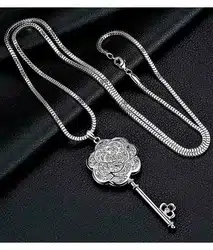Alexandra Chudakova is a leading expert in the beauty segment; also, she has a successful blog where she shares all of her findings. When the pandemic in 2020 made us all stay at home, we started thinking more about using natural sources, making our everyday life more sustainable. Alexandra began to pay more attention to the natural products around her and incorporated them into her beauty routine. We are all accustomed to entrusting our appearance to beautiful jars of creams, serums, gels, and balms, which we hope to turn out to be miraculous. However, it is not always the case. Many companies spend more on packaging and marketing rather than a product itself. Alexandra Chudakova often reviews certain ingredients in those jars, and today she raises the topic of Hyaluronic acid.
Many sources say that using creams with low molecular weight hyaluronic acid is better to moisturize the skin. Since low molecular weight hyaluronic acid has a smaller size, it is usually stated that these molecules can penetrate deep into the skin. Thus, they provide a more powerful moisturizing effect and (possibly) even stimulate fibroblasts. However, we have to get deeper into the topic.
Scientists divide into two types (actually 41, but we will simplify everything to 2):
- High molecular weight (over 1000 kDa)
- Low molecular weight (less than 1,000 kDa)
In the body, the ‘hyaluronic’ naturally passes from one state to another.
For example, the skin contains the HAS1 enzyme. It produces long hyaluronic acid. We call this long chain high molecular weight hyaluronic acid (abbreviated as HM-HA). Then – as it travels through the skin – hyaluronidases attack it and break it down into shorter chains. Each chain is a low molecular weight hyaluronic acid (abbreviated as LM-HA).
Alexandra doesn’t want to give you the Chemistry lesson, but she wrote her conclusions to guide you.
- For skin trauma (for example, photodamage), do not use HM-HA creams to increase inflammation. You can (and should) apply a cream with HM-HA, as it, on the contrary, will relieve inflammation and help heal (and moisturize) the skin.
- With dry skin, in many cases, HM-HA will be sufficient because, being on the skin’s surface, it forms a protective layer. Thanks to this, the water does not evaporate but remains in the skin.
- From an anti-age perspective, low molecular weight hyaluronic acid products have potential. The good news is that new higher molecular weight (500 kDa) formulations are emerging that stimulate keratinocytes, so you may not even have to take any risks.
- Finally, it is worth saying that you also need to be careful with biorevitalizants! New low molecular weight drugs appear on the market. For example, Biomatrix has a HA composition of 7-250 kDa. You probably won’t want a dose of such a small amount when plenty of high molecular products are on the market!
Alexandra Chudakova suggests you follow her Beauty Fetish Blog and learn more about different components. We need to know what we put on our skin.
[zombify_post]









